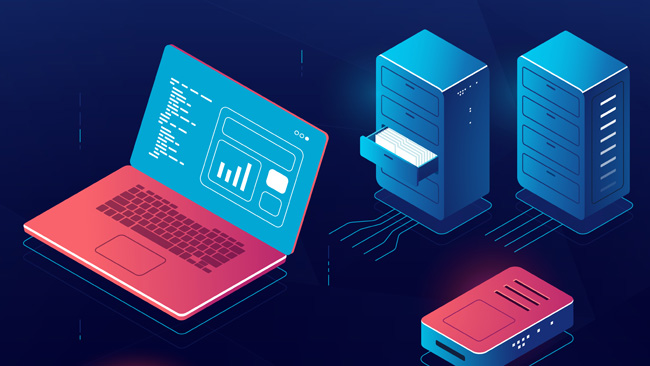Choosing the best storage system for your personal or business use can be daunting, considering you must find the perfect balance between cost, storage capacity, and scalability. Over the years, three main types of data storage have been widely adopted for various applications. These include NAS or network-attached storage, storage area networks (SANs), and direct-attached storage (DAS). This article will go in-depth on DAS, from how it works, use cases, advantages, and everything in between.
Understanding Direct-Attached Storage?
A direct-attached storage, commonly DAS, is a digital storage device connected to the computer, PC, server, or workstation without going through a network. The storage could have an internal or external connection.
There are two varieties of direct-attached storage, namely:
- Internal DAS: This is direct-attached storage where the storage device is connected internally to a PC or server using the HBA (host bus adapter).
- An external DAS: This is a type of DAS where an external storage device has to be connected to a computer or server using some protocols such as the SCSI and iSCSI.
With direct-attached storage, other computers cannot directly access the storage resources unless connected to the host computer. This is because other devices must pass through the host computer to interact with the data. Examples of DAS include; hard drives, tape storage, solid-state drives (SSD), and optical drives like CDs and DVDs.
When to Use Direct-attached Storage
Most people who use direct-attached storage do so for a couple of reasons. Ideally, DAS isn’t the most sophisticated storage solution out there, but they are pretty functional and may come in when you need extra storage capacity within your network. Here’s when DAS becomes a go-to storage solution.
- When There are Budgetary Restrictions
DAS is cheaper than alternative storage options such as NAS or SANs. DAS could be your ideal option if you are on a budget and need a cost-effective storage solution for your small to medium business. And while this storage solution isn’t ideal for sharing data with distributed teams, it is a more practical choice with the lowest administrative overhead and storage costs.
- You Want to Share Data Locally
If all you need is to share data locally, this is an ideal solution. Most businesses choose DAS when they don’t want to set up an extensive network infrastructure. Others also use DAS to boot their physical servers, thanks to the incredible speed of SSDs. And provided you don’t plan on expanding your business soon or going fully remote, direct-attached storage can serve you well.
Advantages of DAS
The benefits of DAS include:
- Simple Configuration: DAS is easy to install and access. Internal DAS is frequently included when buying personal computers and servers, so it comes already set up and ready to use.
- Enhanced performance: DAS provides quick access to data because it is connected to the computer that requests and consumes the data.
- Cost-effective: DAS is much more cost-effective than the other storage options. NAS and SAN require some skills and advanced software and hardware to operate and manage.
Disadvantages of DAS
DAS has some drawbacks, including poor scalability, limited storage management, and security concerns. You can only scale your local DAS by replacing your drive with a bigger one or adding additional drives. After you add the drives, you can only move data across them if you can use each drive independently or if you add software RAID or logical volume management. The other drawbacks include:
- DAS Permits only a single user at a time.
- Data is unavailable to a range of user groups.
- Relatively high administrative cost.
Risks of Using DAS and Their Solutions
When planning to have storage that will house your company’s critical data, you want to prioritize security. The security of direct-attached storage(DAS) devices can be affected by many factors. It’s relatively easy for unauthorized users to access your confidential data. Similarly, poor access controls may deny legitimate users access to critical data. Systems with incorrect configurations and missing security patches may also be vulnerable to data breaches.
If you are using DAS, you should consider these actions to safeguard your most sensitive data:
- Check your DAS system’s resilience by conducting business continuity and fault-tolerant testing.
- Conduct a user permissions audit. Additionally, look for unstructured data available to everyone on your network by scanning the DAS devices. After that, restrict all permissions.
- Set patching as your top priority. Your DAS may become vulnerable to fraud if you don’t apply application software and operating system patches on time.
- Thoroughly assess the security of your DAS environment to find vulnerabilities.
The Bottom Line
DAS technology is simple to use and cost-effective. In small-scale applications where you don’t need to share data with multiple users, DAS offers several benefits. However, the downside is that scalability can be pretty limited, and managing security vulnerabilities can be hectic. If you are uncertain whether direct-attached storage is the ideal option for you, seek professional advice from an IT consultant.




Leave a comment
Have something to say about this article? Add your comment and start the discussion.